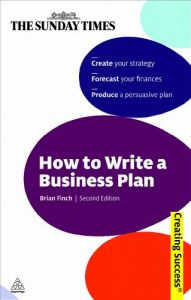Únase a getAbstract para acceder al resumen.

Únase a getAbstract para acceder al resumen.
Brian Finch
How to Write a Business Plan
Kogan Page, 2010
¿De qué se trata?
A great business plan can help you fund your firm, improve it or even sell it.
Recommendation
According to Antarctic explorer Roald Amundsen, “Adventure is just bad planning.” Adventure is certainly not a priority in business. To avoid it, all firms need a well-conceived, properly organized and expertly written business plan. A good business plan can help your business accomplish vital objectives, such as securing the financial backing you need to take your company to the next level or getting top dollar if you decide to sell the firm. Brian Finch, a seasoned business professional, has assembled a basic, practical – though list-heavy – book on how to write a concrete business plan to achieve maximum impact. Although he rightly remarks that “there is bound to be some repetition in your business plan, just as there is in this book,” getAbstract finds that rookie entrepreneurs will benefit from his savvy advice.
Summary
About the Author
Brian Finch is an independent consultant and business book author. He served as development director at various large companies and as finance director for a bookshop chain he co-founded.























Comment on this summary